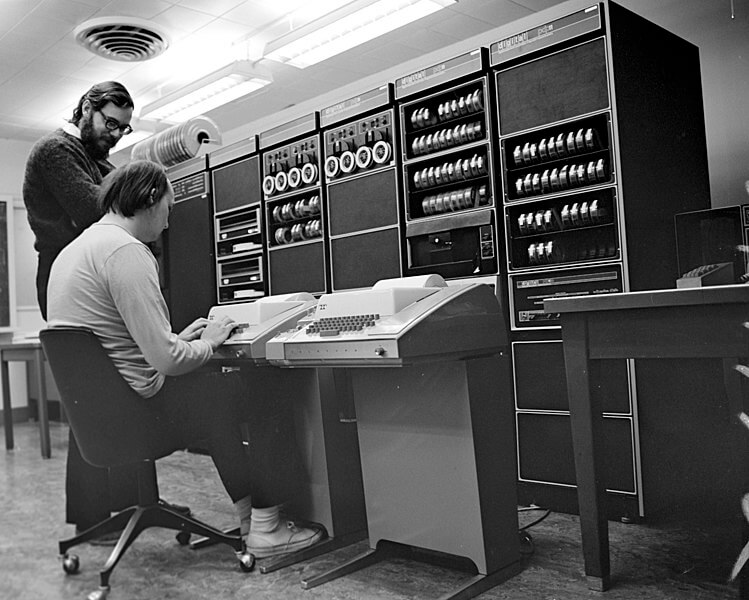Unix
- Start develop
- 1969
- Developer
- Ken Thompson, Dennis Ritchie, and others (Bell Labs)
- Language
- Assembler -> C
1970s - Minicomputers era
After AT&T Bell Labs had dropped out of the Multics project, the Unix operating system was conceived and implemented by Ken Thompson and Dennis Ritchie (both of AT&T Bell Laboratories) in 1969 and first released in 1970.

Later they rewrote it in a new programming language, C, to make it portable. The availability and portability of Unix caused it to be widely adopted, copied and modified by academic institutions and businesses.
Unix philosophy:
- small is better
- make each program do one thing well
- everything is a file
- store data in human-readable text files
1980s - Open Source era
GNU
In 1983, Richard Stallman started the GNU project with the goal of creating a free UNIX-like operating system. By the early 1990s, there was almost enough available software to create a full operating system. However, the GNU kernel, called Hurd, failed to attract enough development effort, leaving GNU incomplete.
32-bit CPU
In 1985, Intel introduced the 80386, a 32-bit microprocessor.
Book about Unix kernel
In 1986, Maurice J. Bach, of AT&T Bell Labs, published The Design of the UNIX Operating System. This definitive description principally covered the System V Release 2 kernel, with some new features from Release 3 and BSD.
Minix
In 1987, MINIX was created by Andrew S. Tanenbaum, a computer science professor, and released in 1987 as a minimal Unix-like operating system targeted at students and others who wanted to learn operating system principles.
1990s - Free OS era
Linux kernel
In 1991, while studying computer science at University of Helsinki, Linus Torvalds began a project that later became the Linux kernel.
🗃️ Linux
1 items